Dear Readers: Thank you for your support as I have made it to Round 2 - The Classics! I appreciate everyone who signed up at Foodbuzz to vote for me. Voting for this round starts Monday, so please visit Foodbuzz to cast your vote!
In the second challenge for Project Food Blog, I’m to make a classic dish from a foreign land. I have to admit I was feeling a bit overwhelmed from all the possibilities, but I had an idea that came to mind pretty early on that I decided would be great to share. I am an adventurous, though not extreme, eater and have made dishes from many cultures, so I wanted to tackle a cuisine I've never cooked before.
When I crave foreign foods when going out, the two cuisines I almost always debate over indulging in are Indian and Thai. I grew up always trying new dishes. I rarely have the same dish twice since so many delicious recipes are just waiting to be tasted. While many dishes or cuisines may technically be foreign in nature, they are not to my palate. Foreign dishes, like Indian Jalfrezi (marinated curry pieces), have become second nature to me; or ingredients of exotic dishes are actually not foreign or unique, just used in different ways.
However, when I enjoy Indian Tikka (marinated chicken pieces) or Thai Gai Pad Med Mamuang (chicken with cashew), it always transports me to another place. The spices and ingredients always make me long for travel and discover how an exotic influence constantly comes out of these dishes, no matter the chef or place I enjoy them.
Indian food is occasionally prepared at my house, so although the dishes still excite me, it’s not something unique to my abilities. However, I cannot recall a time I made a Thai dish. I have always ventured to Thai restaurants for Tom Yum Po Taek (mixed seafood and mushroom soup) or Tom Kha Het (coconut milk and mushroom soup), and of course the classic Pad Thai (stir fried noodles).
The ingredients in a great Pad Thai recipe will have a perfect balance of the five flavors: sweet, salty, sour, bitter, and heat. Many sources list the first four tastes, but spiciness is a finessed staple in Thai dishes.
Many cooks may be familiar with the saying "There’s a pad thai recipe for every cook", and after researching the history of this famous dish and its every changing ingredient list, it is evident why. Pad Thai is one of the national dishes of Thailand, in which the modern version became popular after World War I. Traditionally, Pad Thai was a rice based dish; however, after an economic crisis from the war and a subsequent rice shortage, the government sent out instructions on how to make rice noodles to create jobs and more noodle shops. The efforts were successful and rice noodles have since become a staple in Pad Thai. I was also curious to discover peanuts, almost synonymous with the recipes I'm used to, are not universally used in Thailand for Pad Thai since they have been linked to cancer. After some more research, it appears aflatoxin is possibly causing liver cancer in some villages that use peanuts contaminated by the fungal carcinogen. For the unsure, cashews are often used in the recipe, and since I like cashews more, this is the one I decided to use in my recipe. The westernized version of Pad Thai is commonly greasy and heavy, but in Thailand the dish is drier and lighter - which is the way I like it.
I was thrilled to find nearly all of the ingredients I needed in my local organic co-op. My little town thankfully has a thoroughly stocked Asian market, so I was able to gather the rest of the ingredients I needed. It always makes me happy to discover new finds that are common to other cultures and it keeps me grounded to hear other languages being spoken. It reminds me the world still has secrets it hasn't yet revealed to me. And thanks to my fiancé's adventurous cooking, we have a wok at home. This is the "secret" ingredient, if you will, that gives the Pad Thai its distinctive flavor. A well seasoned, super hot wok will infuse the Pad Thai with an almost smokey quality that will make the finished meal more authentic.
The trick to making a successful Pad Thai is to be prepared. All the ingredients need to be prepped and ready to be thrown into the hot wok, since little time is had between steps.
Also, in case some ingredients are simply not available in your area, substitutes are okay. You can replace fish sauce with soy sauce and palm sugar with brown sugar.
Also, crushing the dried shrimp is optional, but I found it made them more fragrant in the dish. The one item that is important for an authentic taste is the tamarind paste; it's the exotic flavor that really helps bring the Pad Thai together.
I preferred to cook my Pad Thai on the grill outside, a la Alton Brown style, since it creates so much smoke, but cooking inside on the stove with a burner set to high is just fine.
I am very happy with this Pad Thai. It tasted just as good, even better if I may brag, than dishes I've enjoyed at restaurants. The tamarind sauce and smoke from the wok are what really make a difference to have authentic Pad Thai. I really enjoyed savoring each bite to experience the five flavors so important to Thailand's dishes.
Pad Thai
Printable Recipe
6 oz extra firm tofu
1 cup soy sauce
1 oz tamarind paste
3/4 cup boiling water
2 tbsp palm sugar
2 tbsp fish sauce
6 oz Thailand rice sticks
4 tbsp virgin coconut oil, divided
1 shallot, diced
2 garlic cloves, diced
2 eggs
10 shrimp, cleaned with tail removed
1 tbsp dried shrimp, crushed
1 tsp Thai red pepper flakes
1 cup scallions, chopped
1 cup mung beans, rinsed
2 tbsp pickled turnip strips
1/2 cup cashews, roughly chopped
lime wedges for garnish
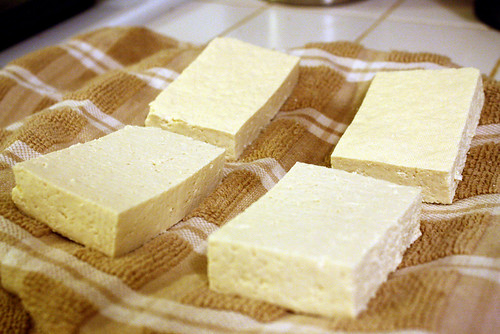
The night before or several hours before cooking, divide the tofu by slicing it once horizontally and once vertically. Place the four pieces on a tea towel, cover, and weight to drain the excess water. Once the tofu are dry, slice into six strips per piece and marinate 12 pieces in 1 cup soy sauce (you will have tofu left over to use for extra Pad Thai or in another recipe).
To prepare the tamarind sauce, add 1 oz tamarind paste to 3/4 cup boiling water and crush well with a fork. Drain the tamarind paste through a sieve, then add the palm sugar and fish sauce.
Approximately 10 min before cooking, cover the rice noodles in hot water. The noodles should not soak more than 10 min or they will become mushy and fall apart, so drain the water if necessary before cooking begins.
Once you are prepared to cook, place 2 tbsp virgin coconut oil in the hot wok and add the tofu. Either toss carefully or use a wooden spoon to keep the tofu moving around the bottom of the wok so they do not burn. After a few minutes, the tofu should be brown on both sides. Remove from the wok and place back in their bowl.
Next, add the last 2 tbsp virgin coconut oil and add the shallot and garlic, also stirring.
After 1 min, add the noodles and sauce, stirring well.
After 1 min, push the noodles further up the wok and add both eggs. Allow them to lose their translucency, then scramble. Once the eggs are scrambled, push them to the side also and add the shrimp.
Once pink on both sides, add the remaining ingredients of dried shrimp, Thai red pepper flakes, scallions, mung beans, pickled turnip strips, and cashews. (Remember to reserve a few pieces of mung beans, scallions, and cashews as garnish.) After cooking for 2-3 min, remove from the heat to plate and serve immediately. Garnish with lime wedges if desired.
~Yields 2 servings.
~Adapted from Alton Brown.
The trick to making a successful Pad Thai is to be prepared. All the ingredients need to be prepped and ready to be thrown into the hot wok, since little time is had between steps.
Also, in case some ingredients are simply not available in your area, substitutes are okay. You can replace fish sauce with soy sauce and palm sugar with brown sugar.
Also, crushing the dried shrimp is optional, but I found it made them more fragrant in the dish. The one item that is important for an authentic taste is the tamarind paste; it's the exotic flavor that really helps bring the Pad Thai together.
I preferred to cook my Pad Thai on the grill outside, a la Alton Brown style, since it creates so much smoke, but cooking inside on the stove with a burner set to high is just fine.
I am very happy with this Pad Thai. It tasted just as good, even better if I may brag, than dishes I've enjoyed at restaurants. The tamarind sauce and smoke from the wok are what really make a difference to have authentic Pad Thai. I really enjoyed savoring each bite to experience the five flavors so important to Thailand's dishes.
Pad Thai
Printable Recipe
6 oz extra firm tofu
1 cup soy sauce
1 oz tamarind paste
3/4 cup boiling water
2 tbsp palm sugar
2 tbsp fish sauce
6 oz Thailand rice sticks
4 tbsp virgin coconut oil, divided
1 shallot, diced
2 garlic cloves, diced
2 eggs
10 shrimp, cleaned with tail removed
1 tbsp dried shrimp, crushed
1 tsp Thai red pepper flakes
1 cup scallions, chopped
1 cup mung beans, rinsed
2 tbsp pickled turnip strips
1/2 cup cashews, roughly chopped
lime wedges for garnish

The night before or several hours before cooking, divide the tofu by slicing it once horizontally and once vertically. Place the four pieces on a tea towel, cover, and weight to drain the excess water. Once the tofu are dry, slice into six strips per piece and marinate 12 pieces in 1 cup soy sauce (you will have tofu left over to use for extra Pad Thai or in another recipe).
To prepare the tamarind sauce, add 1 oz tamarind paste to 3/4 cup boiling water and crush well with a fork. Drain the tamarind paste through a sieve, then add the palm sugar and fish sauce.
Approximately 10 min before cooking, cover the rice noodles in hot water. The noodles should not soak more than 10 min or they will become mushy and fall apart, so drain the water if necessary before cooking begins.
Once you are prepared to cook, place 2 tbsp virgin coconut oil in the hot wok and add the tofu. Either toss carefully or use a wooden spoon to keep the tofu moving around the bottom of the wok so they do not burn. After a few minutes, the tofu should be brown on both sides. Remove from the wok and place back in their bowl.
Next, add the last 2 tbsp virgin coconut oil and add the shallot and garlic, also stirring.
After 1 min, add the noodles and sauce, stirring well.
After 1 min, push the noodles further up the wok and add both eggs. Allow them to lose their translucency, then scramble. Once the eggs are scrambled, push them to the side also and add the shrimp.
Once pink on both sides, add the remaining ingredients of dried shrimp, Thai red pepper flakes, scallions, mung beans, pickled turnip strips, and cashews. (Remember to reserve a few pieces of mung beans, scallions, and cashews as garnish.) After cooking for 2-3 min, remove from the heat to plate and serve immediately. Garnish with lime wedges if desired.
~Yields 2 servings.
~Adapted from Alton Brown.

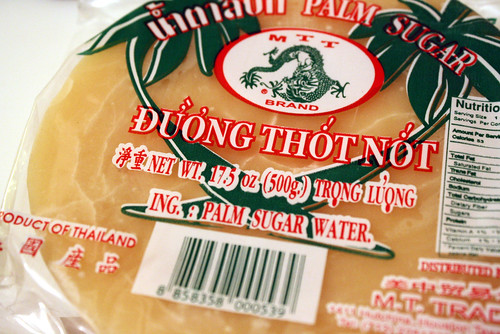
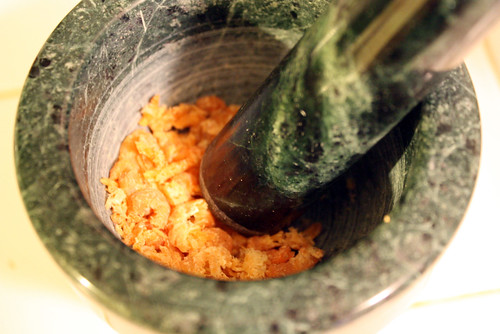
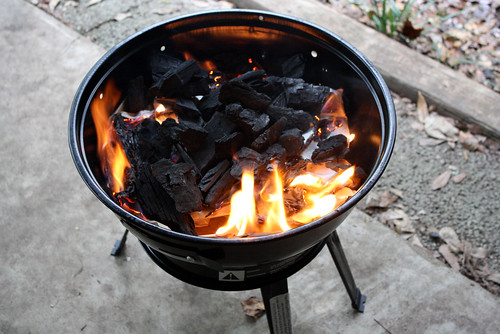
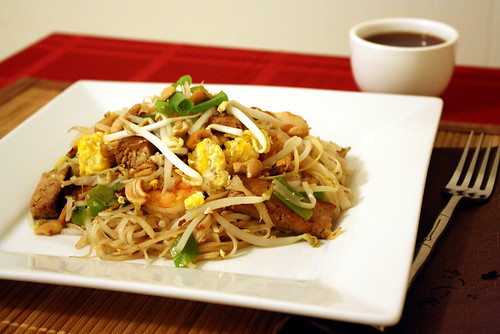
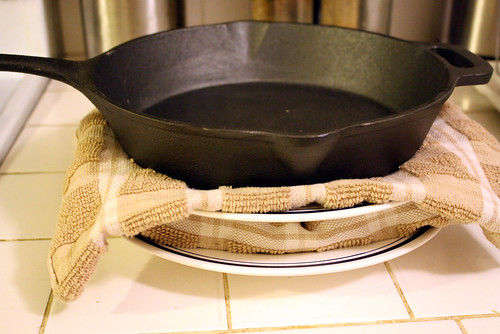
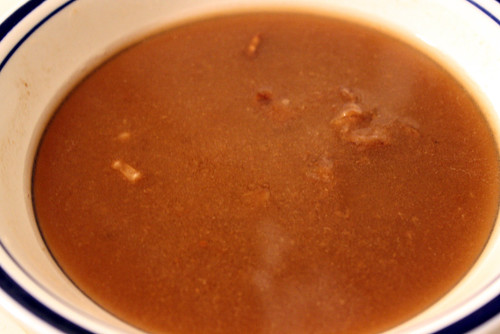
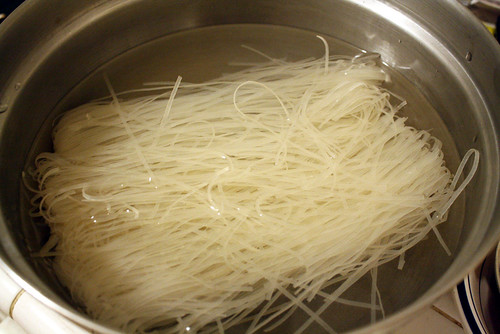

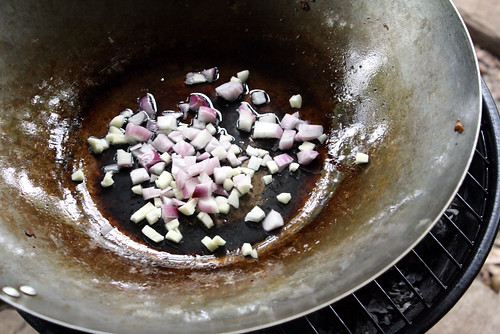
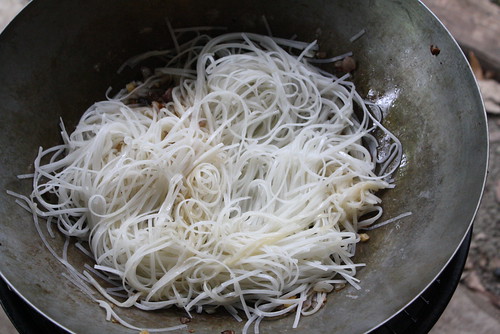
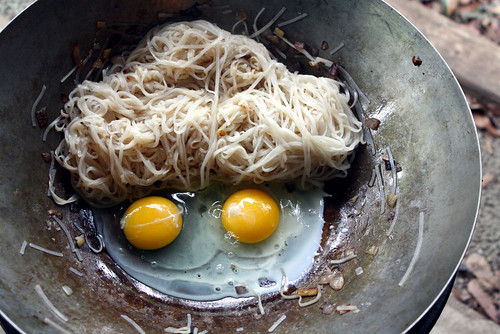
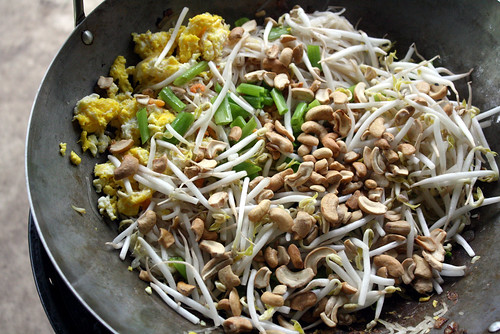
Pad Thai was my first idea (bypassed by a dessert choice). You sure did a great job with it! Good luck
ReplyDeleteDelicious, I was very tempted to do a Thai dish. But choose Japanese in the end. Because I had so many props for Japanese food. lol Your dish looks awesome.
ReplyDeleteThis looks great!!! I just made a vegan version a few days ago. I am giving away a tofu xpress for the tofu. Great entry!
ReplyDeleteGreat job on this dish and you truly used authentic ingredients and techniques. Good luck and i'll cast a vote for you!
ReplyDeleteLooks absolutely wonderful - great that you used the grill too. A favorite.
ReplyDeleteI enjoyed reading your post and learning more about Pad Thai. I am a fan of Thai dishes as well, but never ventured to try Pad Thai. Your post is now making me want to.
ReplyDeletethat looks really really good!
ReplyDeleteGorgeous! LOVE Pad Thai!
ReplyDeleteMy entry was the Indian dessert Gulab Jamun -- click on over and see!
Brie, this looks amazing! I love pad thai and have never attempted this at home. Great photo tutorial!! Best wishes onto round 3!
ReplyDeleteI love that you made this on your grill! Good luck!
ReplyDeleteYour Pad Thai looks amazing. I'm heading over to vote right now.
ReplyDeleteI love Pad Thai! I also appreciate how you grilled it on that beautiful grill. It looks delicious! Good luck in the challenge and you have my vote! :)
ReplyDeleteThis really looks delicious. I love Thai food, but have never made it at home. I've got to try using dried shrimp...sounds like it adds amazing flavor.
ReplyDeleteGood luck on PFB...I'm voting for you!
Oh this brings back awesome memories of my days in the Peace Corps. Thank you for that! Hope we both make it to round three!
ReplyDelete~ Mary
Looks great! I voted for you. :)
ReplyDeleteYou cooked your pad thai *outside*! My heart is swooning! That in itself makes me want to vote - there is something about outdoor Southeast Asian cooking that reminds me of summer visits to the Philippines. You've tackled this dish beautifully, it's one of my favorites!
ReplyDeleteLooks great! I made Pad Thai for my challenge post too! You got my vote :)
ReplyDeletePad Thai is one of my favorite dishes and your take on it looks fantastic. Great recipe with great instructions. Good luck on the next round!
ReplyDeleteLooks fabulous! :)
ReplyDeletelooks delicious,good luck!
ReplyDeletevoted!:))
it looks great and you get the vote for including the lime as garnish:)
ReplyDeletegood luck!
I love cooking pad thai and you're definitely right in that every person's version is a little bit different! Good luck!
ReplyDeleteWonderful entry...looking forward to your next :)
ReplyDelete